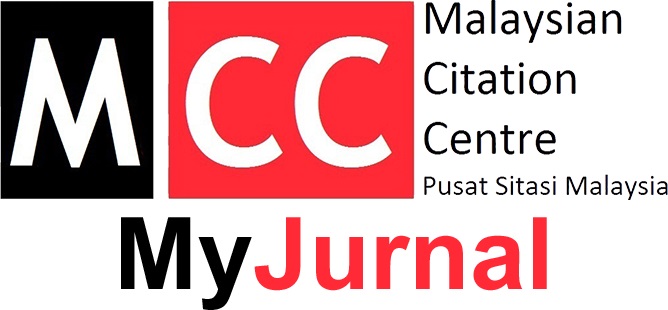REVIEW ON THE PHARMACOLOGY AND CHEMICAL ANALYSIS OF THE OLIVES
Keywords:
chromatography, oleuropein, olive, pharmacologyAbstract
Olive or Olea europaea is originated from Mediterranean and cultivated in different regions of the world. Each part of the plant has its own unique botanical description and gives a lot of benefits, either for biological or common uses. In this research, the pharmacological properties of O. europaea were studied via literature reviews. In the laboratory, the extraction of secondary metabolites from the dried leaves of O. europaea was followed by the chromatographic investigation. The biological uses of O. europaea and detection of the phenolics from olive leaves are highlighted. Specifically, oleuropein is the targeted compound worth to be further analyzed.
References
Ab Muib, N. N. 2018. Phytochemical Screening of Olea europaea. Selangor, Malaysia: Universiti Teknologi MARA, BPharm. thesis.
Babaeenezhad, E., Ahmadvand, H. Reza Mohammadrezaei, K., Shahrokh, B., Peyman, K., Parisa, J. 2019. Protective effects of olive in renal failure; a review on current knowledge. J. of Nephropathol., 8(1):1-8.
Baldino, L., Della Porta, G., Osseo, L. S., Reverchon, E. & Adami, R. 2018. Concentrated oleuropein powder from olive leaves using alcoholic extraction and supercritical CO2 assisted extraction. The Journal of Supercritical Fluids, 133: 65–69.
Boland, A., Gemma Cherry, M., & Dickson, R. 2014. Doing a Systematic Review: A Student’s Guide, SAGE.
Cifá, D., Skrt, M., Pittia, P., Di Mattia, C. D., Polkar Ulrih, N. 2018. Enhanced yield of oleuropein from olive leaves using ultrasound- assisted extraction. Food Science & Nutrition, 6:1128–1137.
Green, P.S. 2002. A revision of the genus Olea L. (Oleaceae). Kew Bulletin, 57: 91 – 140.
Hashmi, M. A., Khan, A., Hanif, M., Farooq, U. & Perveen, S. 2015. Traditional Uses, Phytochemistry, and Pharmacology of Olea europaea (Olive), Evidence-Based Complementary and Alternative Medicine, vol. 2015, Article ID 541591, 29 pages.
Irakli, M., Chatzopoulou, P., & Ekateriniadou, L. 2018. Optimization of ultrasound-assisted extraction of phenolic compounds: Oleuropein, phenolic acids, phenolic alcohols and flavonoids from olive leaves and evaluation of its antioxidant activities, Industrial Crops and Products, 124: 382-388.
Johnson, R., Melliou, E., Zweigenbaum, J., Mitchell & A. E. 2018. Quantitation of Oleuropein and Related Phenolics in Cured Spanish-Style Green, California-Style Black Ripe, and Greek-Style Natural Fermentation Olives. Journal of Agricultural and Food Chemistry, 66(9): 2121–2128.
Martín-García, B., Verardo, V., León, L., De la Rosa, R., Arráez-Román, D., Segura-Carretero, A., Gómez-Caravaca, A. M. 2019. GC-QTOF-MS as valuable tool to evaluate the influence of cultivar and sample time on olive leaves triterpenic components. Food Research International, 115: 219-226.
Parvaiz, M., Hussain, K., Shoaib, M., William, G., Tufail, M., Hussain, Z., Gohar, D. & Imtiaz, S. 2013. A review: Therapeutic significance of olive Olea Europaea L. (Oleaceae family). Global Journal of Pharmacology, 7(3): 333–336.
Pollastri, S. 2008. Biotechnological advances in olive (Olea europaea L.). A review. Advances in Horticultural Science, Special Issue on Olive Breeding and Biotechnology, 22(2): 123-128.
Rahmanian, N., Jafari, S. M. & Wani, T. A. 2015. Bioactive Profile, Dehydration, Extraction and Application of the Bioactive Components of Olive Leaves, Trends in Food Sci. & Tech., 42(2): 150-172.
Rimawi, W. H. & Salim, H. 2017. Wild versus Cultivated Olive Leaves Extracts: Antioxidant Activity, Analysis of Total Phenolics and Oleuropein Content. Journal of Chemistry and Biochemistry, 4(2): 61-88.
Rohman, A. 2014. The Use of FTIR Spectroscopy and Chemometrics for Rapid Authentication of Extra Virgin Olive Oil, J Am. Oil Chem. Soc., 91: 207 – 213.
Rohman, A. & Che Man, Y. B. 2010. Fourier transform infrared (FTIR) spectroscopy for analysis of extra virgin olive oil adulterated with palm oil. Food Research International, 43: 886 – 892.
Sahin, S. & Bilgin, M. 2018. Olive tree (Olea europaea L.) leaf as a waste by-product of table olive and olive oil industry: a review. Journal of the Science of Food and Agriculture, 98(4): 1271-1279.
Schwingshackl, L. & Hoffmann, G. 2014. Monounsaturated fatty acids, olive oil and health status: a systematic review and meta-analysis of cohort studies. Lipids in Health and diseases, 13: 154 - 159.
Talhaoui, N., Trabelsi, N., Taamalli, A., Verardo, V., Gómez-Caravaca, A. M., Fernández-Gutiérrez, A. & Arraez-Roman, D. 2018. Chapter 12 - Olea europaea as Potential Source of Bioactive Compounds for Diseases Prevention, Atta-ur-Rahman, (Eds.) in Studies in Nat. Prod. Chemistry, 57: 389-411, Elsevier.
The Plant List [Internet]. 2013. Retrieved on January 22, 2019 from http://www.theplantlist.org
Downloads
Published
Issue
Section
License
Copyright (c) 2020 Journal of Academia

This work is licensed under a Creative Commons Attribution-NonCommercial-NoDerivatives 4.0 International License.












